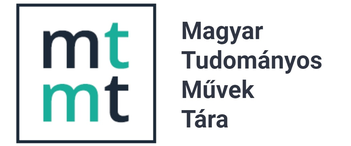Photographing People in Public and the Protection of Privacy
The Jurisprudence of the European Court of Human Rights and Some Comparisons with England
Abstract
This study examines certain aspects of privacy protection, addressing the questions of whether it is possible to consider a person’s image (most often a photograph) as part of their private life and whether the protection of privacy can be claimed in public spaces. A thorough examination of the European Court of Human Rights (ECtHR) and English case law reveals that these questions can be answered affirmatively. Certain general principles emerge from this case law, which take into account the freedom to discuss public affairs, namely, the protection of freedom of speech and freedom of the press. Based on an examination of these, it seems that a connection with a matter that qualifies as a public affair justifies the protection of the freedom of the press, meaning that purely tabloid content does not enjoy such protection. This creates widespread protection for freedom of expression and freedom of the press and may also result in numerous frustrated privacy plaintiffs.
References
Barendt, E. (2009) ‘Balancing Freedom of Expression and Privacy: The Jurisprudence of the Strasbourg Court’, Journal of Media Law, 1(1), pp. 49–72; https://doi.org/10.1080/17577632.2009.11427333.
Barnes, R. D. (2006) ‘The Caroline Verdict: Protecting Individual Privacy Against Media Invasion as a Matter of Human Rights’, Penn State Law Review, 110(3), pp. 599–614.
Cheung, A. S. Y. (2009) ‘Rethinking Public Privacy in the Internet Era: A Study of Virtual Persecution by the Internet Crowd’, Journal of Media Law, 1(2), pp. 191–217; https://doi.org/10.1080/17577632.2009.11427341.
Gajda, A. (2022) Seek and Hide. The Tangled History of the Right to Privacy. New York: Viking.
Hatzis, N. (2005) ‘Giving Privacy its Due: Private Activities of Public Figures in Von Hannover v Germany’, King’s College Law Journal, 16(1), pp. 143–157; https://doi.org/10.1080/09615768.2005.11427599.
Hughes, K. (2009) ‘Photographs in Public Places and Privacy’, Journal of Media Law, 1(2), pp. 159–171; https://doi.org/10.1080/17577632.2009.11427339.
Hughes, K. (2014) ‘Publishing Photographs without Consent’, Journal of Media Law, 6(2), pp. 180–192; https://doi.org/10.5235/17577632.6.2.180.
Krotoszynski, Jr., R. (2015) ‘Reconciling Privacy and Speech in the Era of Big Data: A Comparative Legal Analysis’, William & Mary Law Review, 56(4), pp. 1279–1338.
Moreham, N. A. (2006) ‘Privacy in Public Places’, Cambridge Law Journal, 65(3), pp. 606–635; https://doi.org/10.1017/S0008197306007240.
Moosavian, R. (2014) ‘Deconstructing “Public Interest” in the Article 8 vs Article 10 Balancing Exercise’, Journal of Media Law, 6(2), pp. 234–268; https://doi.org/10.5235/17577632.6.2.234.
Morgan, J. (2003) ‘Privacy, Confidence and Horizontal Effect: “Hello” Trouble’, Cambridge Law Journal, 62(2), pp. 444–473; https://doi.org/10.1017/S0008197303006378.
Ovey, C., White, R. (2006) Jacobs and White: European Convention on Human Rights. 4th edn. Oxford: Oxford University Press.












